
HOME
CULINARY/ENOLOGY
ART/CULTURE
NEWS/EVENTS
“A SENSORY BRIDGE TO GLOBAL CULTURE”
PUBLISHER’S CORNER
Buenos Aires is the capital and Argentina's largest city with a population exceeding 3 million. Founded by the Spanish in 1536, it became the capital in 1862. Since that time it has gone through periods of dictatorships and suppression of liberties. Only in the last 25 years or so have the dreaded late night knock on the door and disappearance of critics given way to democracy, illustrated by regular demonstrations for one thing or another, often in the grassy area just opposite the presidential palace.
Architecturally, the city is an intriguing mix: stately old buildings of subdued colors boast intricately carved facades, some festooned with cherubs, flowers and figures resembling gargoyles and horrific creatures, others with ornate wrought iron porches.

“NO-WINTER” TOUR: BUENOS AIRES, ARGENTINA
READ “NO-WINTER” TOUR: IGUAZU FALLS ― ARGENTINA/BRAZIL WONDER CLICK HERE

CELEBRATE OUR
DEBUT ISSUE OF TL&N.
SEE OUR SPONSORS ABOVE
ADVERTISE FREE IN NOVEMBER!


This is a jewel of a city in eastern Argentina nestled on the Rio de la Plata, a
river so large that locals here and in Uruguay refer to it as the sea. Buenos Aires
exudes considerable charm despite tight economic times that have left some neighborhoods
weather worn and frayed around the edges and a government unable to keep pace with
the city's need for infrastructure maintenance and preservation of historic buildings.
Photos courtesy of Nathaniel Sheppard
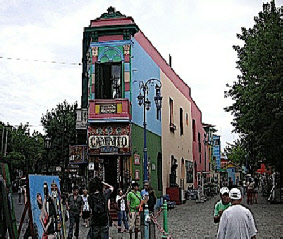
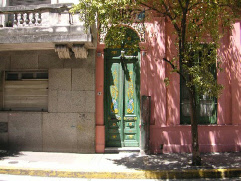
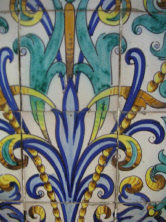
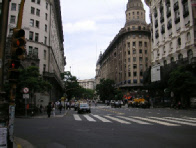
Some buildings wrap around corners where streets converge. Others sit atop low hills above bustling wide boulevards and parks well landscaped with blooming trees and ornamental flowers. Then there are the colorful houses and low-rise buildings with artfully painted entryways set along a maze of narrow one way streets.
Several neighborhoods are undergoing private renovation, providing interesting new slants on architectural design and introducing chic new businesses and restaurants. Even in the subway system you can find appealing art in gracefully painted tiles that cover the walls and some areas of flooring ― all very European.
Visitors are at once struck by the ferocity of driving in which measured pace and courtesy have given way to anarchy and daredevilry, where negotiating intersections without signposts is a game of chicken in which the fastest or largest vehicle usually wins. It’s like Bradbury's Fahrenheit 451 come to life. Bedlam.
Pedestrians are a nuisance to be tolerated for only so long by oncoming traffic,
and hardly at all by turning traffic rounding corners at near tire screeching speeds,
putting pep in their steps. Drivers in the movie Fast & Furious no doubt did their
apprenticeships here.
Strangely enough though, the road rage we know at home is nearly
absent here. Drivers shake their heads and raise their hands questioningly at some
of the hard to believe maneuvers of fellow drivers, but seldom does it rise to the
level of rolling down the window and shouting or giving offending drivers dirty looks
or the finger.
Say a driver makes a right turn from 3 or 4 lanes to the left. This shocking breach
of good driving practice, etiquette and common sense usually is ignored altogether
by other drivers, as are those drivers who barrel their cars between other vehicles
like motorcycles, missing those they pass by mere inches.
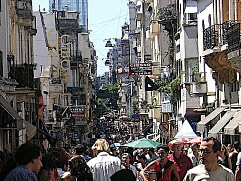
The good news is that transportation around the city is cheap, eliminating the need
for visitors to negotiate this madness. Taxi rides to almost any place in the city
are under $6, with most averaging $3 to $4. The subway or Subte costs 80 centavos
or about 27 cents. Food too is cheap as is wine, making it possible to have a really
deluxe dinner for two with a bottle of high quality wine and desert for about $15
per person. This was what it cost for a superb buffet of salads, vegetable dishes,
fresh
fruits, char grilled meats and fish, wine and dessert at a restaurant at Santa Fe
and Puerreydon.
Buenos Aires also is a good walking city with much to see between
neighborhoods. Do watch out for significant dogdoo on sidewalks in the absence of
a pooper scooper law.
Shops and boutiques abound, and on weekends there’s a giant antiques fair in the San Telmo district — I found a wonderful brass and silver crucifix there. On Saturdays and Sundays, an impressive craft market takes place a stone's throw from Ricoleta Cemetery, the city’s most visited tourist attraction.
It is here that the rich and famous are buried, often in ornate mausoleums or above-ground enclosures with magnificent carvings of angels and other designs. Eva Duarte, who married President Juan Peron, became known as Evita and went on to charm or hoodwink the nation, depending on one's point of view, is buried here too but in a simple family plot.
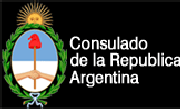
Of course one of the emblematic driving forces in Buenos Aires is tango, the dance of mystery and magic, passion and possibility. There are murals all over the city depicting tango or those who make up tango legend, such as Carlos Gardel. Gardel, btw, like fellow Argentine native son Che Guevara, is more renowned dead than he was while alive.
No Buenos Aires craft market is complete without tango memorabilia or tango paintings and tango key chains and what have you, and on market days
“Of course one of the emblematic driving forces in Buenos Aires is tango, the dance of mystery and magic, passion and possibility.”
“NO-WINTER” TOUR: BA CONTINUED
numerous restaurants and sidewalk cafes feature tango demonstrations.Tango dance
studios abound as do the milongas where tourists and old fashioned porteños alike
go to dance. And there are more tango shoe and clothing stores than at which you
could shake a bandoneón.
“...there are more tango shoe and clothing stores than at which you could shake a bandoneón.”
There are even hotels designed around tango themes. One is the Mansion Dandi Royal at Piedras 922 in San Telmo, an easy walk from the antiques market. It is beautifully appointed with paintings and murals depicting tango. A shiny, winding wooden staircase leads to upper floors where rooms are named after famous tango singers or musicians. Near the entrance is a salon where tango lessons are given.
Though bustling during the day, this is a city that really comes to life late at night. Restaurant patrons don't begin to arrive in numbers until after 9 PM and continue coming around midnight. Sidewalk cafes and charming eateries tucked away on side streets abound, as do serious ice cream parlors and empanada stands. Tango milongas start and continue even later, holding on until 3 or 4 AM.
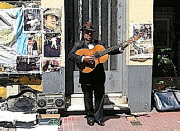
The best map of the city is one given out at tango establishments and tourist centers
accompanied by a tango class and events calendar. The map also includes listings
of milongas and their location coordinates. Each year in mid-March the city draws
thousands here from around the world to a tango festival known as CITA.
I found people
here very cordial and agreeable and boy, what a relief it was to be in a city where
I could raise my hand and not only would a cab stop but sometimes two would race
to get the fare. And how totally foreign it was for a cab to pull up alongside me
while I was walking and check to see if I needed transport.
If cordial, Buenos Aires
folk are not always the most efficient in business. Phone service, for example,
may leave you scratching your head. Often, and with no clear reason, you can't call
land line phones from cell phones or vice versa.
I took a suitcase for seam repairs
to a recommended shop on Rocamora with the straightforward name Bag Service. I returned
in a week as they specified and,
BY NATHANIEL SHEPPARD